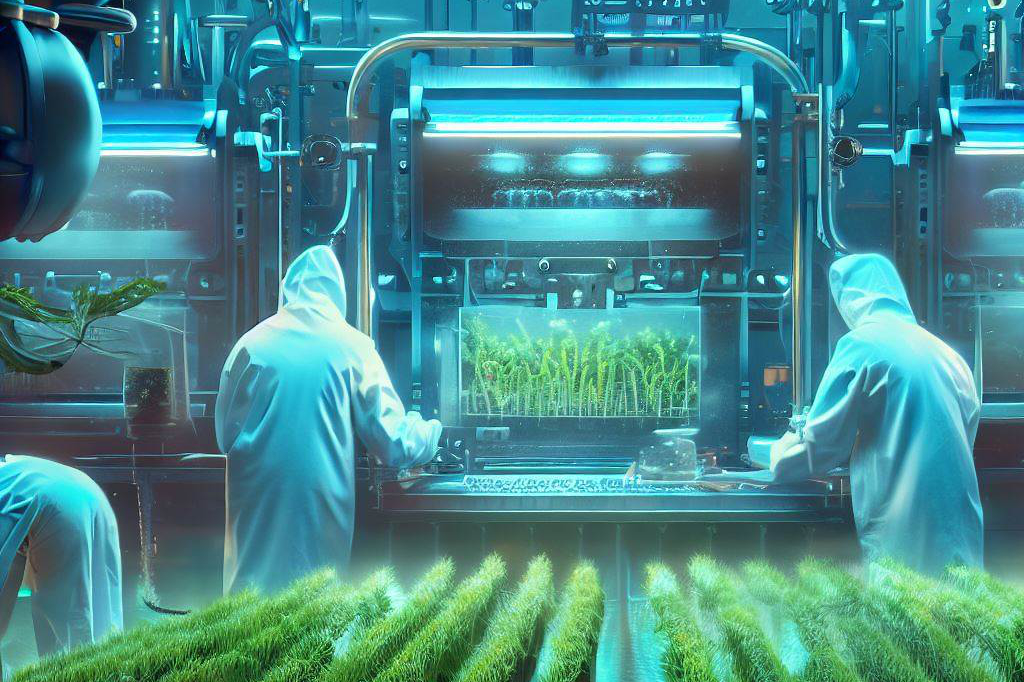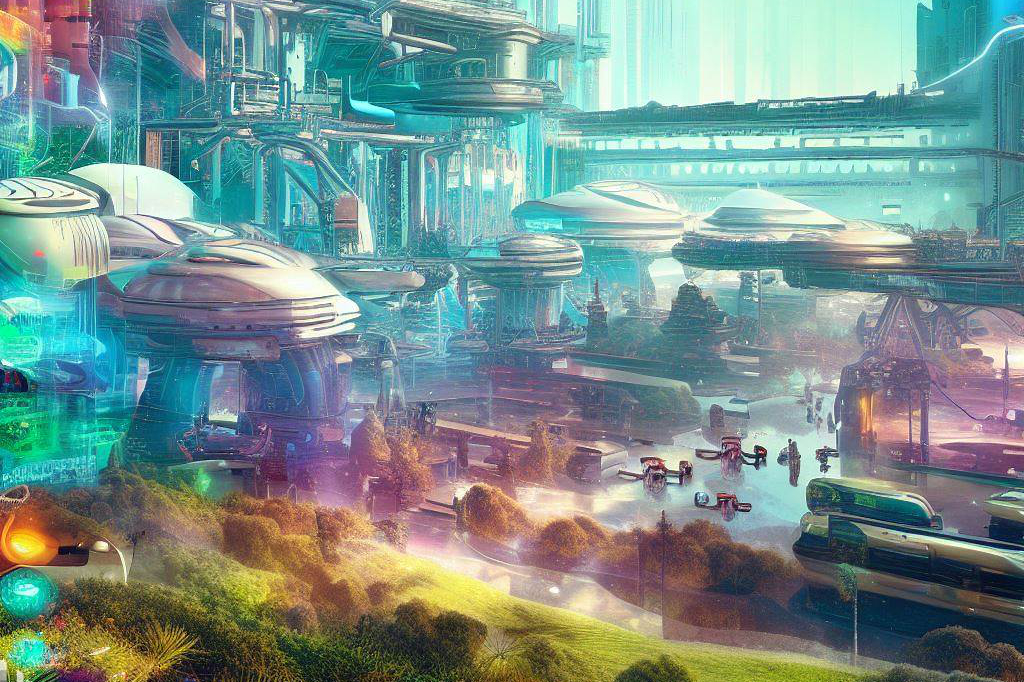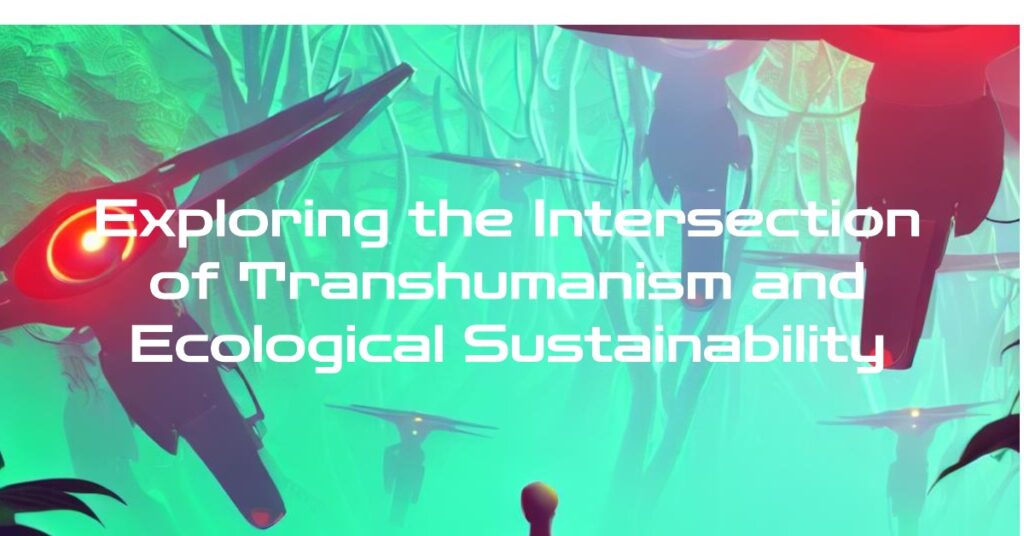Defining Transhumanism and Ecological Sustainability
Transhumanism is a movement focused on the use of technology to enhance human abilities beyond their biological limitations. This includes, but is not limited to, genetic engineering, cybernetic enhancements, and artificial intelligence.
The goal of transhumanism is to push the boundaries of human potential and ultimately achieve a post-human state.
Ecological sustainability, on the other hand, refers to the responsible use and preservation of natural resources for future generations.
It involves finding ways to meet current needs without compromising or depleting resources for future generations. The goals of ecological sustainability are often aligned with those of environmentalism.
The Intersection Between Transhumanism and Ecological Sustainability

At first glance, it may seem that transhumanism and ecological sustainability are at odds with each other. After all, transhumanist goals often involve manipulating nature for human benefit, while ecological sustainability involves protecting nature from human harm. However, there are areas where these two concepts overlap.
One example is the use of biotechnology for sustainable agriculture. Genetically modified crops have been developed that can resist pests without requiring harmful pesticides or fertilizers.
Additionally, biodegradable materials can be used in place of traditional plastics, reducing waste in landfills and oceans. The intersection between transhumanism and ecological sustainability presents both challenges and opportunities for society as we move towards a more technologically advanced future.
Transhumanism and Ecological Sustainability: A High-Level Overview

A brief history of transhumanism and ecological sustainability movements
Transhumanism is a philosophical movement that aims to use science and technology to enhance human physical, intellectual, and psychological capabilities. It emerged in the late 20th century as a response to advances in genetics, artificial intelligence, nanotechnology, and other fields.
Transhumanists envision a future where technologies like gene editing, brain-computer interfaces, and augmented reality allow humans to transcend the limitations of biology.
Ecological sustainability is an approach to environmental management that seeks to balance human needs with the conservation of natural resources.
The concept emerged in the 1970s as a response to environmental degradation caused by industrialization, population growth, and other factors. Ecological sustainability emphasizes the interconnectedness of living systems and recognizes that ecological health is essential for human well-being.
Key principles of each concept

The key principles of transhumanism include
- enhancing human longevity and health through technology,
- expanding cognitive abilities through access to information networks or neural implants,
- using technology for space exploration or colonization efforts,
- and ultimately creating post-human beings with superintelligence or even digital immortality.
The key principles of ecological sustainability include
- minimizing waste generation through recycling efforts or sustainable production methods;
- reducing greenhouse gas emissions from energy-intensive activities like industrial agriculture;
- conserving natural resources like water or biodiversity;
- promoting social equity by ensuring access to resources for marginalized communities;
- fostering grassroots activism around environmental issues.
Challenges in reconciling the two concepts

On the surface, transhumanism seems at odds with ecological sustainability since it often involves using technology that consumes energy or relies on non-renewable resources. Additionally, some critics suggest that transhumanist ideology emphasizes individual achievement over collective responsibility for environmental stewardship. However, there may be opportunities for transhumanism to support ecological sustainability goals.
For example, emerging technologies like synthetic biology or biomimicry could lead to breakthroughs in sustainable agriculture or medicine. Alternatively, transhumanist visions of space exploration or colonization could help relieve the pressure on Earth’s resources.
Ultimately, reconciling the two concepts will require careful consideration of their ethical and societal implications. It will be essential to balance the desire for technological progress with the need for ecological preservation and social equity.
The Role of Technology in Transhumanism and Ecological Sustainability

Advancements in Technology that Support Transhumanist Goals while Promoting Ecological Sustainability
As transhumanist goals aim to enhance human capabilities, technology plays a crucial role in achieving these goals. However, it is essential to consider the environmental impact of such advancements. Fortunately, many technological advancements align with ecological sustainability efforts.
One such advancement is renewable energy sources like solar or wind power. These sources are limitless and produce no harmful emissions.
Biodegradable materials like bioplastics are another example that support both transhumanist and ecological sustainability goals. Such materials reduce waste and pollution, which ultimately contributes to a cleaner environment.
Additionally, biotechnology has made significant strides in creating eco-friendly alternatives for various industrial processes that typically rely on non-renewable resources, such as petroleum-based products. For instance, researchers have developed a process where they genetically engineer bacteria capable of producing biofuels from organic waste material.
Potential Conflicts between Technological Progress and Ecological Sustainability

However, while some technological advancements promote both transhumanism and ecological sustainability goals simultaneously, others can create conflicts between the two concepts. For example, while electric vehicles help reduce carbon emissions from transportation, their production relies heavily on mining for lithium-ion batteries, which harm the environment significantly.
Additionally, AI-powered technologies could lead to an increase in energy consumption due to data storage requirements and increased computing power utilization. Moreover, some technologies ignore environmental damage caused by their production processes altogether – such as rare earth metals used in the production of digital devices.
Their extraction causes significant ecological damage by polluting large tracts of land with toxic chemicals used during refinement processes. Technology plays a crucial role in both transhumanism’s advancement and ecological sustainability efforts; hence, careful consideration is necessary when developing new technologies with the potential for significant environmental impact.
Navigating Ethical Considerations

The Ethical Implications of Merging Humans with Technology to Achieve Transhumanist Goals
The integration of humans and technology raises ethical concerns about the impact on human identity, autonomy, and privacy. Some argue that transhumanism could result in a loss of individuality or even lead to a dystopian future where technology is used to control people.
Others view it as an opportunity for humans to enhance their physical and cognitive abilities, leading to a better quality of life. Ethical implications also arise around the use of technology in environmental sustainability efforts.
For instance, some advocates may argue that genetically modifying crops to withstand harsher weather conditions or using drones to monitor deforestation are necessary for protecting the environment. However, others may hold that such interventions could potentially cause unintended consequences and negative impacts on natural ecosystems.
Balancing Individual Freedoms with Collective Responsibility for Environmental Stewardship
Transhumanism is rooted in the belief that individuals should have control over their own bodies and be free to use technology as they see fit. However, when it comes to ecological sustainability efforts, individual freedoms must be balanced against collective responsibility for ensuring a healthy planet. This tension between individual freedom and collective responsibility becomes apparent when considering issues like climate change or resource depletion.
While some may argue that individuals should be free to consume as much energy or resources as they want, others maintain that we have a collective responsibility to limit our impact on the environment for the sake of future generations. Finding solutions necessitates striking a balance between individual freedom and collective responsibility – one that recognizes personal autonomy while also taking into account broader environmental considerations.
A Thought Experiment: The Ethics of Growing Human Organs in Animals
An interesting thought experiment highlights some challenges raised by ethical considerations at the intersection between transhumanism and ecological sustainability: What if we could grow human organs in animals to address the shortage of organ donors? On the one hand, this innovation could save countless lives and potentially revolutionize organ transplantation. On the other hand, it raises serious ethical concerns about animal welfare and environmental sustainability.
Would it be ethical to raise animals solely for human benefit?
How would we ensure that these animals are treated humanely and are not subjected to unnecessary harm?
This thought experiment illustrates how ethical considerations are not always black-and-white when it comes to transhumanism and ecological sustainability. It is essential to consider all angles before making decisions that could have far-reaching implications for individuals, society, and the environment.
Case Studies: Examples of Transhumanist Efforts to Promote Ecological Sustainability

Biohacking for Sustainable Agriculture: Enhancing Crop Resilience and Yield
One promising example of transhumanist efforts to promote ecological sustainability is the use of biohacking to enhance crop resilience and yield. Traditional agricultural practices rely heavily on chemical fertilizers and pesticides, which can have negative environmental impacts such as soil degradation, water pollution, and harm to beneficial insects.
However, by leveraging advances in biotechnology such as gene editing and synthetic biology, researchers are exploring ways to engineer crops that are more resilient to pests, droughts, and other environmental stressors without resorting to harmful chemicals. For instance, a group of researchers at the University of Illinois recently used CRISPR-Cas9 gene editing technology to develop a soybean plant with enhanced resistance to nematodes – microscopic worms that can damage soybean roots and reduce yields.
By modifying a single gene involved in nematode infection, these scientists were able to develop soybeans that exhibited significantly reduced damage from nematode infestations while maintaining high yields. Similar efforts are underway across the globe with other crops like corn, wheat and rice.
Use of Biotechnology for Carbon Emission Reduction
Another promising example is the use of biotechnology – particularly microbial engineering – for carbon emission reduction. While renewable energy sources like wind and solar power offer significant potential benefits for reducing greenhouse gas emissions associated with energy production, they cannot solve all our carbon problems alone.
Biotech companies are now working on developing microbes that can directly convert CO2 into fuel or bioplastics with minimal carbon footprint. For instance, Biocarbon Engineering is a UK-based startup that uses drones equipped with seed-planting devices operating at scale in areas devastated by deforestation or natural disasters like fire-floods in Brazil.
The drones are capable of planting up to 100,000 trees in a day, reducing the need for manual labor and drastically cutting down reforestation time. By using biodegradable seed pods made from recycled paper pulp and imbued with mycorrhizal fungi to boost root growth, the drones can create forests that capture more carbon dioxide than their deforested counterparts.
Harnessing Human-Technology Synergy for Environmental Conservation
An emerging example of transhumanist efforts to promote ecological sustainability is the idea of harnessing human-technology synergy for environmental conservation. This involves leveraging technological advancements in artificial intelligence (AI), sensors, and other smart systems to empower individuals with enhanced environmental awareness, decision-making ability, and personalized feedback about their impact on the environment.
One example is Citizen Scientist program by NASA, which enables ordinary citizens around the world to contribute data on air quality. Participants build low-cost sensors that collect air quality data, which they then upload through a web app.
Over time, this data is aggregated into a larger dataset that helps researchers understand how pollution levels change over space and time. Participants also receive feedback from NASA scientists on how their individual contributions are making a difference in improving our understanding of air pollution.
These case studies demonstrate how transhumanist tools and approaches can help address ecological challenges by promoting innovation at the intersection between biology and technology. By finding ways to reconcile technological progress with ecological sustainability goals, we can create highly efficient systems that benefit both humanity and our planetary home.
Future Implications

The Benefits of Navigating the Intersection of Transhumanism and Ecological Sustainability
If society successfully navigates the intersection of transhumanism and ecological sustainability, there are a multitude of potential benefits. One significant benefit is that we could potentially reduce our carbon footprint by using technology to create more sustainable living habits.
For example, we could use genetic engineering to create crops that require less water or use nanotechnology to develop new ways of capturing energy from the environment. Additionally, if we achieve transhumanist goals such as life extension or enhanced cognitive function, individuals would be able to contribute more to society and potentially solve problems related to climate change.
Another potential benefit is that if we merge humans and technology in a way that promotes ecological sustainability, we may be able to prevent extinction-level events like those caused by global pandemics or asteroid impacts. If humanity were better equipped with advanced technological capacities (e.g., artificial intelligence), then it could mitigate the risks posed by these events.
The Drawbacks of Navigating the Intersection of Transhumanism and Ecological Sustainability
While there are many potential benefits associated with navigating this intersection, there are also some drawbacks. For instance, there is concern about inequality: not all people will have equal access to new technologies designed for ecological sustainability or human enhancement.
This could lead to a divide between those who can afford high-tech solutions (like learning implants) versus those who cannot. Another drawback is that some view transhumanism as being antithetical to religious or spiritual beliefs.
This might cause tension between groups with different values when it comes time for civilization-wide decision-making. Technological advancement might encourage people toward unsustainable living practices since they feel entitled because they have access not only to life-extending technologies but also plentiful resources.
Moving Forward …

Navigating the intersection between transhumanism and ecological sustainability poses numerous challenges. However, if humanity can successfully merge advanced technology with ecological sustainability principles, the benefits will be immense.
The potential to reduce our carbon footprint while also achieving transhumanist goals like life extension or cognitive enhancements is exciting – but we must approach this intersection cautiously since there are also potential drawbacks. With thoughtful planning and careful consideration of ethical implications, we can build a future that balances individual freedoms with collective responsibility for environmental stewardship.

C M, a seasoned editor, journalist, and consultant, is deeply fascinated by the convergence of technology, space, and the future of humanity.
With a particular interest in transhumanism, futurology, and the philosophical and ethical dimensions of these domains, C M serves as the lead contributor to TranscendSphere and SpaceSpotlight.
When not penning insightful articles on these rapidly evolving fields, C M indulges in their love for podcasts and books, proudly embracing their status as a ‘Happy Nerd Extraordinaire!’





